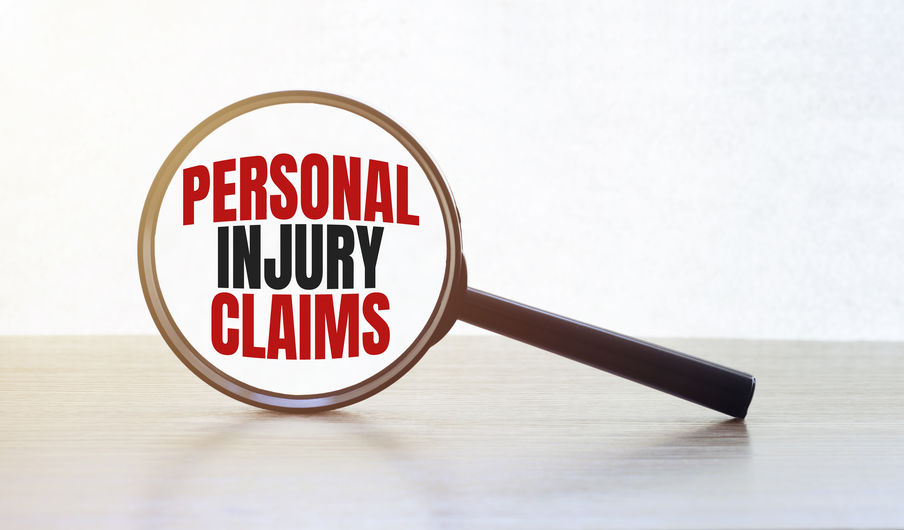Handling a personal injury case can be a complex and challenging process. In addition, the exact process can vary from state to state. If you have been injured because of the negligence of another, you may be struggling as you handle medical treatment, looming bills, and physical pain. The last thing you want to do is fight the insurance company for a fair settlement on your own, let alone teach yourself how the injury claims process works.
How to Handle a Personal Injury Case from Start to Finish
Navigating the Washington State personal injury claims process demands careful attention to various deadlines for filing paperwork and executing crucial actions. The most significant deadline is the statute of limitations to file your personal injury claim, which is generally three years from the date of your injury or the date you discovered the injury in Washington State.
While three years might seem like a long time, considering recovery time, claim preparation, and accurate paperwork completion, this deadline can pass quickly. Managing these timelines is complex, which is why it is helpful to work with a personal injury lawyer.
With this in mind, here’s a general guide for how to handle a personal injury case from start to finish:
Step 1: Consult an Attorney
Find a reputable local personal injury attorney with experience in similar injury cases. Discuss your case with the attorney; they will assess the situation and advise you on the best course of action.
Step 2: Draft Your Complaint
Should you decide to move forward, the initial step in the personal injury claims process in Washington State involves creating the necessary documents to be filed with the court. This essential document, commonly referred to as a “complaint” or “petition,” serves as the foundation of your claim. Within this complaint, you must outline the details of the incident, explain the negligence of the at-fault party, and specify the amount of compensation you are seeking.
Once your complaint has been formally submitted to the court, you are required to dispatch a summons to the defendant, notifying them of the legal action you have initiated against them.
Step 3: Uncover and Evaluate Evidence
Following the defendant’s response to your initial complaint, the pre-trial discovery phase begins. During this period, your attorney and the defendant’s legal representative request evidence and witness statements from one another, forming the basis of their arguments.
This process is time-consuming because all evidence must be meticulously reviewed. If new evidence surfaces, both sides are granted the opportunity to examine it. Once the discovery phase concludes, the defendant may attempt to dismiss the case if your argument or evidence appears weak or flawed. With the guidance of an experienced personal injury attorney, any attempts to terminate your claim are typically unsuccessful.
Step 4: Initiate Settlement Negotiations
When the defendant and their legal counsel express willingness to negotiate, you can engage in discussions regarding a monetary settlement. Generally, a robust personal injury claim enhances the likelihood of a favorable settlement offer from the defendant.
During this phase, the two parties negotiate terms and debate what constitutes a fair settlement. These negotiations occur outside of the courtroom. If mutual agreement on the settlement terms is reached, the claim is then concluded.
Step 5: Proceed to Trial
In the absence of a settlement agreement, the case progresses to court. Both parties present their arguments before a judge and/or jury. The duration of this process varies, ranging from a single day to several weeks. Ultimately, the judge or jury determines the defendant’s liability and the extent of compensation owed to you.
Step 6: Settlement
If you win, you’ll receive the settlement or judgment amount within a reasonable period of time, less your attorney’s fees and expenses.
Please note that this information is not a substitute for legal advice. The steps we listed above offer a broad overview of the process, but there are many variables that can affect your personal injury claim. Because each situation is unique, it’s important to work with a skilled personal injury lawyer to develop a plan of action and have someone who knows the process by your side throughout. They can navigate the legal complexities, negotiate on your behalf, and ensure your rights are protected.
Seek the help of a personal injury lawyer
If you or a loved one was injured because of the negligence of another, contact a personal injury lawyer to discuss your legal rights. Let an experienced accident attorney fight for the full compensation that you deserve. It is not uncommon to receive a settlement from the insurance company that is five to ten times larger with the help of a lawyer. Call the personal injury lawyers at Tario & Associates, P.S. in Bellingham, WA today for a FREE consultation! We have been representing residents of Whatcom County, Skagit County, Island County and Snohomish County since 1979. You will pay nothing up front and no attorney fees at all unless we recover damages for you!





